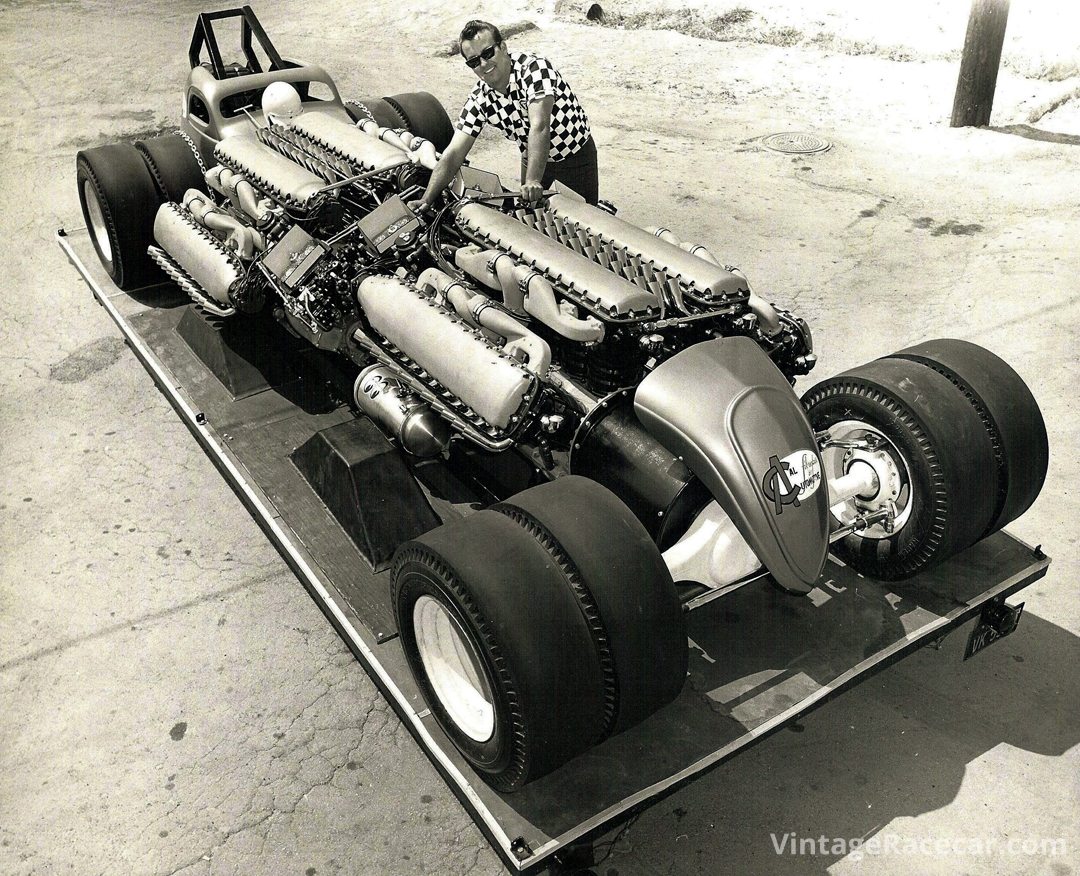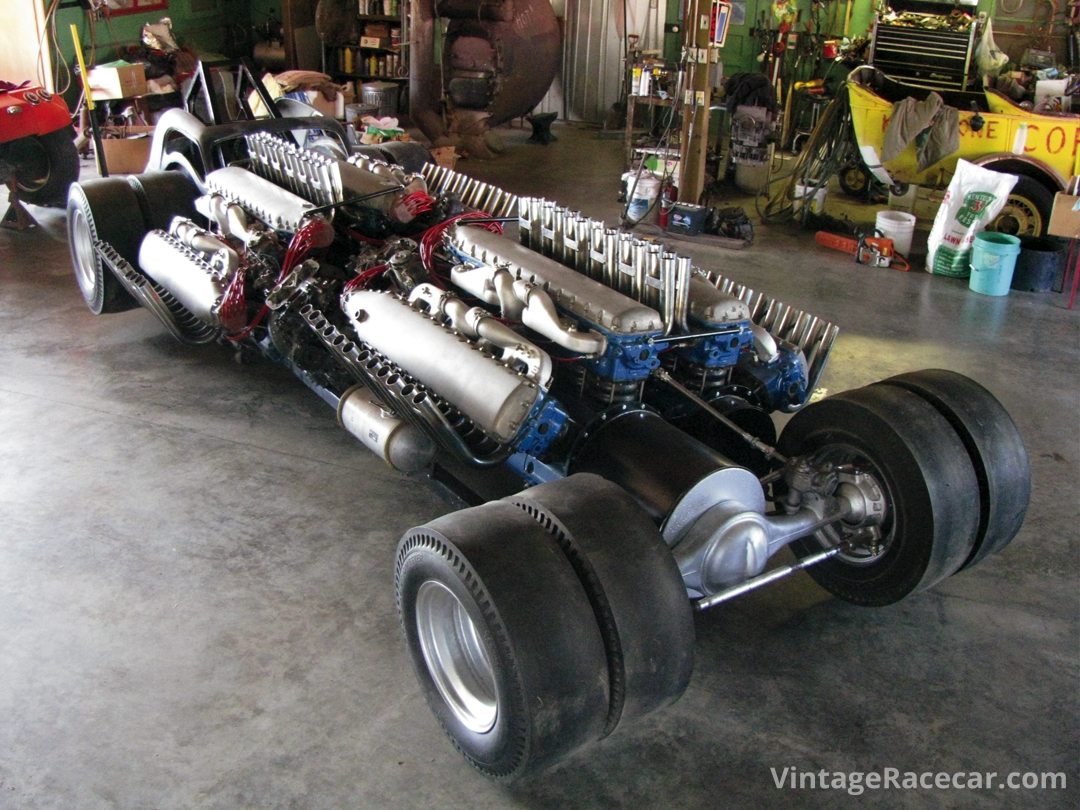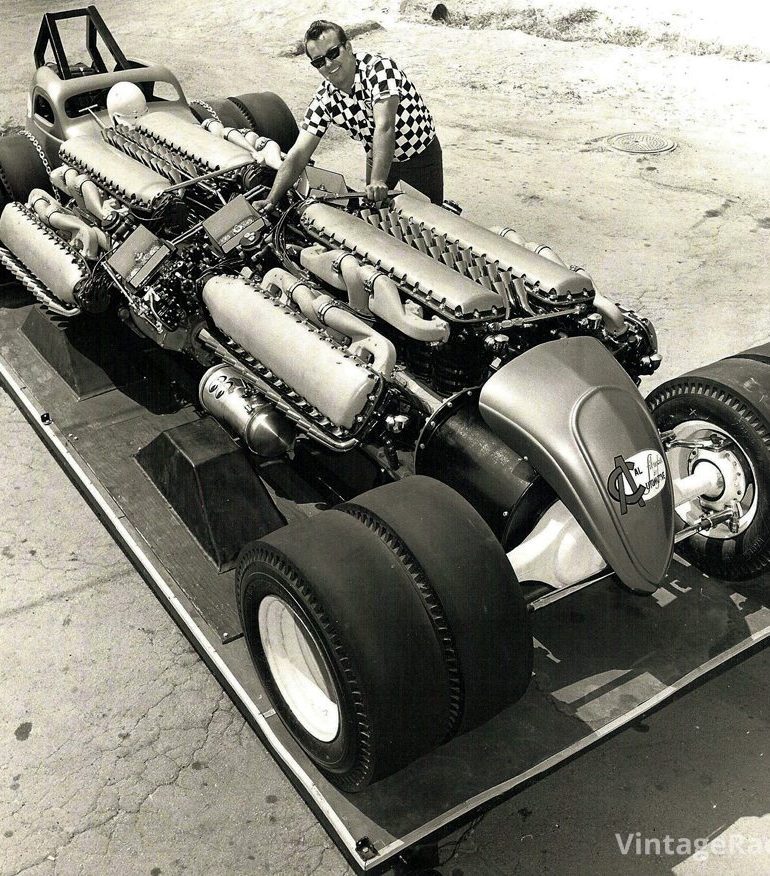Something Totally Mental In The Best Way Possible
I’ve been aching to write a story about something totally mental. A Hidden Treasure beyond the realm of conventional thought and understanding. Maybe I could find something massive; or perhaps something with unworldly power, or insane mechanicals, or with too many engines or tires. As luck would have it, I found all of the above in one car, with a single phone call, to one of my favorite automotive lunatics, Mike Guffey.
As readers may recall from the December 2012 installment of this column, Guffey was raised in Hartford City, Indiana, not far from the Start/Finish line of Hanna-Barbera’s Wacky Racers cartoon. It would seem that plenty of that comic-strip-in-motion’s wackiness rubbed off on Guffey who collects all manner of what he refers to as “stuff.” Spend just a few minutes on his website (www.guffeystuff.com) and be prepared to be amazed, amused and befuddled. The man collects everything from mini-bikes to train cabooses to racing tires to genuine Miller racing cars…and more. This month’s Hidden Treasure definitely resides in the “and more” category in the grandest way possible.
Jim Lytle Jr. had a fascination with World War II V12 Allison aircraft engines and his first creation with one of these 3,000-horsepower monsters in the 1960s was a ’34 Ford Tudor drag car known as “Big Al.” This car was insanely fast and intimidating to any opponent in the neighboring quarter-mile lane. Big Al had trouble finding folks willing to share the drag strip and the car was therefore primarily used as an exhibition race car. As might be expected, it was a real crowd pleaser.
Lytle’s second Allison-powered creation began by pulling the original steel body off of Big Al and using it as a pattern for a replacement fiberglass body with a 12-inch roof chop. This car, known as “Big Al II,” is believed to be the first one-piece drag car with a slip-off body. The car made just three racing passes before Lytle sold it to Ray Alley (who raced it as the “P-51”). Movie stuntman Tex Collins later owned the car and referred to it as “Tex’s Twister.”
What happened next is so utterly beyond outrageous that it begs the simplest of questions…Why? The answer turns out to be rather simple…availability of parts. In the mid-1960s, Allison Aircraft engines were plentiful and could be had for $150 or less. Think about it. That’s five cents or less per horsepower. As the story goes, Lytle’s friend Ron Jolliffe had sketched out a coupe with side-by-side Allison V12s. A 3-D model followed, but was executed with four Allison engines to ensure that the new build would have “adequate power.”

Lytle was so pleased with the model that he quickly purchased four Allison V12s and got down to the madness building of what he would call the “Quad Al.” The chassis was built from three-inch square tubing with a ¼-inch wall thickness and a wheelbase of 162-inches. The front pair of engines was positioned to face backward with the rear engines facing forward. It was necessary for Lytle to tilt the rear engines 15-degrees in order to align the throttle linkage and carburetors with the two front engines. The monstrous two-barrel Stromberg carbs weighed 40 pounds apiece and each engine ran one. Collectively the four engines displaced 6,840-cubic-inches and produced 12,000 horsepower, figures that landed the Quad Al in the Guinness Book of World Records for much of the 1970s and 1980s.
In order to carry the massive 7,000 pound load and deliver the colossal power to the pavement, the car was constructed in a four-wheel-drive configuration spinning eight 16-inch Ford V8 rims running in dually fashion with pairs of wheels welded together. Rubber was vintage M&H Racemasters with four, 10-inch wide tires up front and four, 10-½-inch wide tires at the rear.
The tiny coupe body was a fiberglass Fiat Topolino unit built by Cal Automotive, which also provided the grille shell. Moon contributed the tanks for the project and Champion provided the special racing spark plugs. Lytle had expended just $2,000 in the build when reality hit him square in the checkbook. In order to make the car a runner, Lytle needed a one-off ring and pinion and clutch assembly. The best price he could find was $5,000 and that is what ended the project and Lytle’s dream of racing the Quad Al.

The car sat for a while and in 1965 Lytle sold the Quad Al to Tex Collins. Following Collins’ unexpected death, his widow sold off 12 Allison engines, including the four residing in the Quad Al. The engineless car was later sold to two racing brothers in California, then later to a gentleman in Nebraska. Cy Kubista became the next owner, before selling the Quad Al to Wally Miller of Wisconsin. In 1994, Miller sold the car to Guffey, who says he simply couldn’t help himself.
By the time Guffey had acquired the Quad Al the price of a single Allison V12 had soared to $30,000 and the restoration required four. Guffey had no plans to commit that manner of financial suicide but over time has been able to gather up four mock Allisons and install them in the car. He has also sourced a Topolino body which is in place and ready for paint.
Guffey said, “I want to have the Quad Al ready for display next year, which will be its 50th anniversary. People just go nuts when they see the thing. And how many people own a car that was in the Guinness Book of World Records and was powered by four aircraft engines that helped us win World War II? I got a lot of neat stuff, but no other stuff like that. It’s a real life Wacky Racer.”




